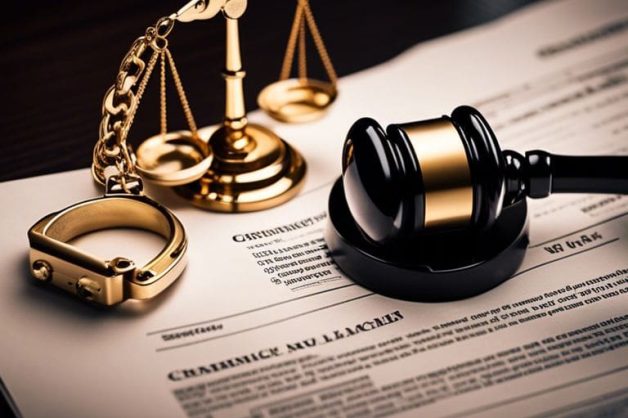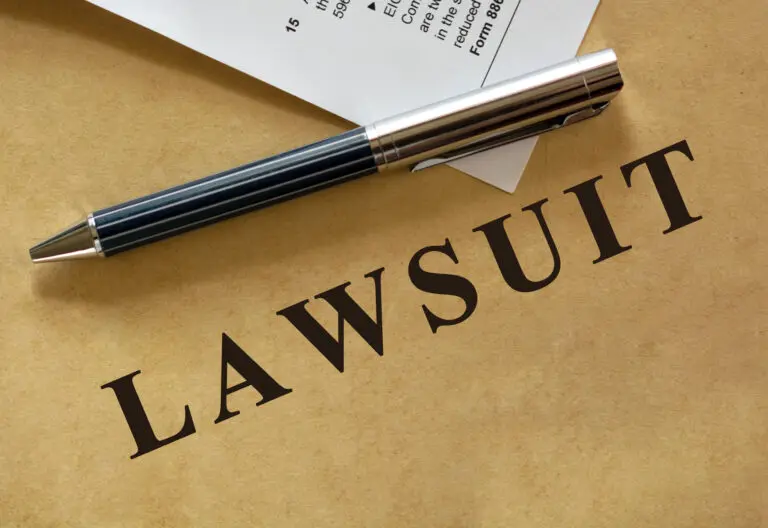Over the course of legal proceedings in criminal cases, the term “at large” is often cited and can have significant implications for the individual involved. Being at large refers to a situation where a defendant is out of custody and not restrained by arrest or imprisonment. Understanding the legal consequences of being at large is crucial in navigating the complexities of the criminal justice system.
Defining “At Large” in Criminal Law
While the term “at large” may seem straightforward, its legal implications in criminal cases can be significant. Understanding this term is crucial for both legal professionals and individuals involved in the criminal justice system.
Legal Definition and Usage
To define “at large” in criminal law, it refers to a situation where an individual has not been captured or detained by law enforcement after being wanted for a crime. This term is commonly used to describe a fugitive or someone who is on the run from authorities. When a person is labeled as “at large,” it signifies that they are still evading arrest and are considered a potential threat to public safety.
Historical Context and Evolution of the Term
Criminal law has a long history of using the term “at large” to describe individuals who have not been apprehended by authorities. The origins of this term can be traced back to early English common law, where it was used to designate individuals who were not under the control or supervision of the legal system. Over time, the concept of being “at large” has evolved to encompass a broader range of situations, including individuals who have violated the terms of their bail or parole.
It is important to recognize that the term “at large” has deep-rooted historical significance in the field of criminal law and continues to play a crucial role in modern legal proceedings. Understanding the implications of this term can provide valuable insights into the complexities of the criminal justice system.
The Process of Pursuing At-Large Individuals
Clearly, when an individual is deemed to be “at-large” in the legal system, it means that they are evading their required appearance or legal obligations. In criminal cases, pursuing these at-large individuals becomes a critical task for law enforcement agencies.
Law Enforcement Role and Strategies
AtLarge individuals pose a challenge to law enforcement due to their avoidance of apprehension. To address this, law enforcement agencies employ various strategies such as conducting surveillance, following leads, and collaborating with other agencies to track down these individuals. Utilizing technology and data analysis also play a significant role in locating and apprehending at-large suspects.
Collaboration with Other Agencies and the Public
With the complexities involved in pursuing at-large individuals, collaboration with other agencies and the public becomes crucial. By sharing information, resources, and expertise, law enforcement can enhance their efforts in locating and apprehending these individuals. Public cooperation in reporting sightings or providing tips can also aid in the successful apprehension of at-large suspects.
Agencies
Multiple agencies, including local police departments, state law enforcement agencies, and federal authorities, often work together in pursuit of at-large individuals. This collaborative approach allows for a more coordinated and efficient effort in apprehending suspects who are evading the legal system.
Legal Rights of Individuals At Large
Constitutional Protections
For individuals who are considered at large in criminal cases, they still retain certain Constitutional protections granted to all citizens. These rights include the right to due process, which ensures that any legal proceedings are fair and just. Additionally, individuals at large have the right to legal counsel and the right to remain silent to avoid self-incrimination.
Rights Regarding Arrest and Detention
Any individual at large maintains the right to be informed of the reason for their arrest, as well as the right to contact legal representation. They also have the right to a speedy trial and to be protected from any form of cruel or unusual punishment while in custody. It is crucial for individuals at large to understand and assert their rights during the arrest and detention process to ensure a fair legal proceeding.
The rights regarding arrest and detention are crucial safeguards to prevent any form of abuse of power by law enforcement. Individuals at large must be aware of these rights to protect themselves and ensure that their legal rights are respected throughout the criminal justice process.
Potential Legal Consequences for Being At Large
Impact on Criminal Proceedings
The legal status of being at large can have significant implications on ongoing criminal proceedings. The accused may face the risk of arrest if they fail to comply with court orders or attend scheduled hearings. This could result in the issuance of a bench warrant, leading to further legal complications and potential penalties.
Additional Charges and Penalties
Consequences for being at large can extend beyond the initial charges. In some cases, individuals who are at large may face additional criminal charges and enhanced penalties. Evading authorities and failing to comply with legal obligations can result in serious consequences, including stiffer fines, extended jail time, and a negative impact on one’s legal record.
Another aspect to consider is that being at large may aggravate the original offense and lead to the imposition of harsher punishments. Prosecutors and judges may view the act of fleeing or avoiding legal responsibilities as a sign of guilt or contempt for the legal system, potentially influencing the outcome of the case.
Bail and Bond Considerations for At-Large Cases
Determining Bail Eligibility
After a suspect is apprehended and brought before a judge, one of the key considerations is determining the individual’s bail eligibility. Bail is a financial arrangement that a bail bonding agency or a court sets to ensure the defendant appears in court as required. Factors that influence bail eligibility include the severity of the alleged crime, the defendant’s criminal history, ties to the community, and the likelihood of the individual appearing for future court dates.
Consequences of Violating Bail Terms
Bail is not only a means to secure a defendant’s appearance in court, but it also comes with strict terms and conditions. Violating these terms can have serious consequences, including revocation of the bail bond, forfeiture of any collateral or property put up for bail, and potentially facing additional criminal charges for bail jumping. It is crucial for defendants to adhere to the conditions of their bail to avoid further legal trouble and maintain their freedom while awaiting trial.
A violation of bail terms can lead to significant repercussions, including the issuance of a bench warrant for the defendant’s arrest, additional fines, or even imprisonment until the court date. It is imperative for individuals out on bail to familiarize themselves with their obligations and responsibilities to avoid facing further legal jeopardy.
The Role of Technology in Monitoring At-Large Individuals
Electronic Surveillance and Tracking
To effectively monitor at-large individuals, law enforcement agencies often rely on electronic surveillance and tracking technologies. These tools can include GPS tracking devices, electronic ankle monitors, and cell phone tracking software. By utilizing these technologies, authorities can keep tabs on the movements and activities of individuals who are required to remain within certain boundaries or adhere to specific curfews.
Legal and Ethical Concerns of Privacy
AtLarge individuals subject to electronic monitoring may have legitimate concerns about their privacy rights. The use of tracking devices raises questions about the extent to which authorities should be allowed to monitor an individual’s every move. There are also ethical implications surrounding the potential misuse or abuse of this technology, as well as concerns about data security and the possibility of unauthorized access to sensitive information.
It is imperative for legal frameworks to establish clear guidelines regarding the use of electronic surveillance and tracking in monitoring at-large individuals. Privacy rights must be balanced with the need for public safety, ensuring that the use of these technologies is lawful, ethical, and proportionate to the circumstances.
Papel
Legal and ethical concerns surrounding the use of technology to monitor at-large individuals are a crucial aspect of criminal justice systems. The balance between surveillance capabilities and individual privacy rights must be carefully considered to ensure that monitoring practices are both effective and respectful of civil liberties. By addressing these concerns through robust legal frameworks and ethical guidelines, authorities can better navigate the complexities of monitoring at-large individuals in the digital age.
Public Safety and Community Impact
Risk Evaluation and Management
Community safety is a top priority when dealing with individuals who are at large in criminal cases. Law enforcement agencies must conduct thorough risk evaluations to assess the potential threat posed by these individuals to the community. This involves analyzing the individual’s criminal history, behavior patterns, and any potential dangerous tendencies that could put the public at risk.
Legal Obligations of Law Enforcement to the Community
For law enforcement, ensuring the safety and well-being of the community is an inherent legal obligation. When individuals are at large in criminal cases, it is the responsibility of the authorities to take all necessary measures to protect the public from harm. This includes coordinating search efforts, issuing public alerts, and collaborating with other agencies to track down the individual and prevent any further criminal activity.
Risk assessments must be conducted regularly to update the level of threat posed by the at-large individual. Law enforcement agencies must be proactive in managing these risks to prevent potential harm to the community. This may involve increased patrols in certain areas, monitoring of known associates, and taking immediate action if there are any signs of heightened danger.
Conclusión
With this in mind, it is crucial for individuals with pending criminal cases to understand the legal implications of being at large. Failing to appear for court dates or violating conditions of release can result in serious consequences, including additional charges, bench warrants, and the revocation of bail. It is important to comply with all court orders and conditions set by the judge to avoid further legal troubles.
Being at large in a criminal case can add complications to an already complex legal process. Seeking the guidance of a skilled attorney can help individuals navigate through the challenges and ensure they are following the proper legal procedures. By being proactive and taking the necessary steps to comply with court orders, individuals can mitigate the risks associated with being at large and work towards achieving a favorable outcome in their criminal case.









